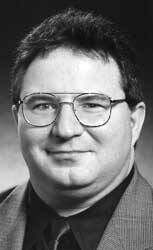In the year 2000, state and federal prisons held about 1.3 million inmates, and local jails held around 600,000. A decade earlier, in 1990, state and federal prisons held about 700,000 inmates, and local jails held around 400,000. Thus between 1990 and 2000, the country’s incarcerated population nearly doubled, growing from 1.1 million to 1.9 million.
On Nov. 15, 2000, the U.S. Conference of Catholic Bishops issued “Responsibility, Rehabilitation, and Restoration: A Catholic Perspective on Crime and Criminal Justice.” The statement rejected as unwise and inhumane the sentencing policies that had contributed to the decade-long increase in the incarcerated population. The bishops also called for greater public investments in crime-prevention programs and substance-abuse treatment programs.
It was a brilliant balancing act, expressing sincere regard for crime victims while condemning the “culture of violence” that prevails in many homes and neighborhoods, summarizing crime statistics and trends while infusing nearly every page with Catholic social teaching. Accordingly, the statement was generally well received by liberals and conservatives, Democrats and Republicans and Catholics and non-Catholics alike.
Now, however, it is time for the U.S.C.C.B. to dust off and update its 2000 statement, issue a new one this year and take center civic stage in preaching and pushing for public policies that protect the public without further increasing the number of people who are behind bars.
In 2008, the latest year for which there are complete data, state and federal prisons held about 1.5 million people, and local jails held around 800,000 people. Thus, between 2000 and 2008 the country’s incarcerated population increased from 1.9 million to 2.3 million. That 20-percent increase occurred even though more than 600,000 people have been released from state and federal prisons each year since 2000.
On the one hand, research by the U.S. Bureau of Justice Statistics indicates that nearly 60 percent of the post-2000 increase in the prison population consists of offenders whose latest crime of conviction is a violent crime. And, as summarized in the latest study sponsored by the National Academy of Sciences, as much as a third of the post-1994 crime drop nationally is probably due to increased incarceration.
On the other hand, the same bureau data indicate that fully half of all state prisoners, and about 90 percent of all federal prisoners, are serving time for a nonviolent crime. Numerous empirical studies and surveys indicate that prisons today hold hundreds of thousands of persons whose only crimes, including ones for which they were never arrested, have been nonviolent crimes involving illegal drug possession, use or small-scale sales.
There is early but encouraging evidence that state criminal justice systems are punishing smarter, not harder. Between 2000 and 2008, for instance, 28 states actually decreased their imprisonment rates, including 30-percent drops in states as politically diverse as Massachusetts and Texas. Three states—Maryland, New Jersey and New York—actually held fewer prisoners in 2008 than they did in 2000. But the federal prison system continues to grow at an unprecedented clip (about 4.7 percent a year).
Many Catholic lawmakers give the bishops fits (or worse) when it comes to church teaching on vital issues like abortion, but these same officials are likely to follow where the U.S.C.C.B. leads on crime and punishment.
For one thing, post-2000 public opinion has shifted in ways favorable to prevention and treatment policies like those advocated by the bishops a decade ago. For another, as the post-2007 recession reduces government revenues, more politicians are “getting religion” with respect to scaling back the over $70 billion a year for “corrections” that taxpayers lavish mainly on long-term lockups.
Still, the biggest and best reason for the bishops to rally anew for zero prison growth and related policies is revealed in the beautiful words of Pope John Paul II with which the U.S.C.C.B. opened its 2000 statement. On July 9, 2000, the pope envisioned a day “when our conscience can be certain of having done everything possible to prevent crime” and “to offer those who commit crimes a way of redeeming themselves and making a positive return to society.” Amen.








